June 14, 2019 by Haley Mackenzie
Hello again, this is Haley. Today marks one month (28 days) since we landed in Kenya! In regard to work, we have completed meal assessments at three primary schools, interviewed 23 women from two women’s groups, completed one ‘train the trainer’ food based nutrition education (CHAMP’s) seminar, and one nutrition seminar for a women’s group participating in a Rotary International Project in Nkubu, about an hour away from where we live. Our prof Jennifer Taylor is happy with our progress, and so are we!
Last Tuesday through Saturday, the National Agricultural Show was taking place in Meru Town at Chuka University. Julia, Julie, and I decided that we would like to go, and Dorcus offered to join us with Melissa. Julie is a Kenyan dietitian and an incoming UPEI Master’s student; Dorcus is our translator who graduated from Chuka only a couple of years ago; and Melissa is the three-year-old daughter of one of the Farmers Helping Farmers employees in Kenya, Steven Mwenda. We were lucky that we had the chance to escape work on a Saturday and learn more about the Kenyan culture. I was especially excited coming from a produce farm to learn about the agricultural technology being introduced in Kenya. Unfortunately, our fellow veterinary students could not join us as they were busy with work.

Photo 1: The nutrition team & Melissa!
As soon as we stepped out of the car, Melissa was bombarded by men and women, handing her sunglasses, a plastic windmill, and a balloon on a stick, placing a balloon hat on her head, and even going as far as to beginning to paint her face! She felt overwhelmed by the attention and we removed the toys from her and moved through the crowd. We were approached by a new vendor selling these toys about every 10 minutes as we walked towards and through the fair, making it impossible for us to leave empty handed. Consequently, Melissa left the fair with a windmill, new sunglasses, and her face painted!
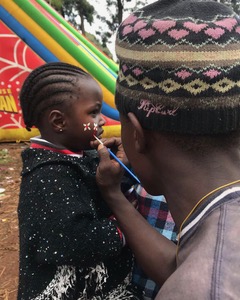
Photo 2: Little Melissa getting her face painted
To my surprise, the fair resembled PEI’s Old Home Week more than I had expected. There was a section for farmers, businesses, and other Universities to display their agricultural innovations, as well as a section for children with inflatables and rides, and a Kenyan-style cafeteria. The first discrepancy I noticed was that the vendors were drawing customers in with displays and loud music. I was very impressed by the displays of Kiirua and Meru County, complete with a model of Mount Kenya, cement roads, homes and power lines. One man motioned us over to complete a test-run of a new security system engineered by his school for Kenyan farms. He handed me his phone and asked me to walk across where the sensor had been placed. As expected, a loud siren began ringing and his phone received a text alerting him that someone has trespassed. Only ten seconds after the text was sent, his phone began to ring as the system further alerted him of the potential danger. We found this system interesting because, although it is a good idea, it did not seem practical with the number of stray cats and dogs that might wander across the sensor and the close proximity of neighbours that may be awoken by such a loud alarm. Nevertheless, we were happy that they invited us to take a peek at their new system
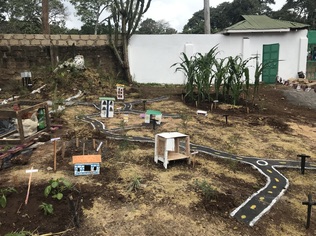
Photo 3: Display of the Town of Kiirua
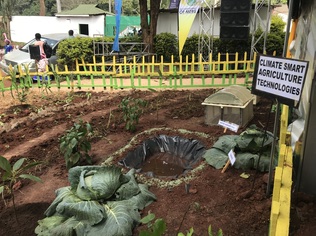
Photo 4: Display of farm and greenhouse

Photo 5: Diverse selection of fruits and veggies for sale
After walking through the ‘business’ side of the fair, we continued towards the shops and rides. Throughout the fair, we noticed that many vendors had transplanted vegetables and fruit just for this week and others had bouquets of flowers to draw people in. Rather than carnival workers motioning for us to play their games, as is commonly seen at PEI’s fairs, we experienced many small shop owners selling beads and jewellery, men selling sausages, and children selling suckers, sodas, and candies. As we had expected, we were the only white people at the fair. After spending a month in Kenya, we’ve gotten used to being stared at and often being the center of attention. We heard “sister, sister” and “mzungu!” many times, as the Kenyans tried to gain the business of the only white people at the fair. On three different occasions, Julia and I were asked to pose for a picture with other fair-goers and their families. We happily obliged, as children and even adults are often very excited to see us.
The carnival and rides section of the fair included a small Ferris wheel, inflatables, a child’s roller coaster, and tall swings. Melissa wanted to go on the Ferris wheel, so Dorcus accompanied her as three men tucked them into their seat and began the ride. Only about two spins later, Melissa was crying to get off. This is when Julia and I realized that the ride was being completely controlled by the men spinning the wheel. To stop the ride, the men simply jumped on the wheel and used their weight to slow the ride to a halt! Melissa wiped her tears and pointed to the high swings, indicating that she was ready for the next ride. Knowing she couldn’t handle such a big ride alone, Dorcus offered to join her on the caterpillar roller coaster instead. We continued past the rides towards the field which was littered with people riding camels, horses, and little electronic cars.
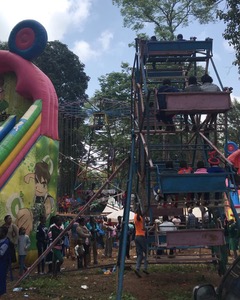
Photo 6: The amusement rides at the fair
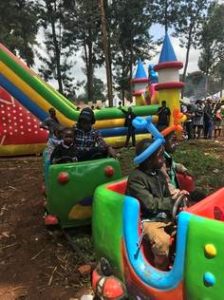
Photo 7 here: Dorcus and Melissa enjoying the ride
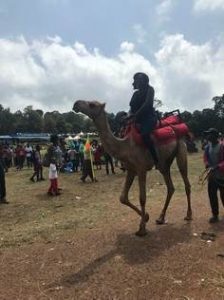
Photo 8: Julie, UPEI MSc. student and dietitian, riding a camel
By this time, we were searching for a spot to eat at the Kenyan-style cafeteria. The Kenyan-style cafeteria included a ‘food road’ with multiple tents containing vendors selling mainly fried foods. This was tough for Julia & I as vegetarians, as most vendors were selling dishes containing meat. We settled on French fries and chapatis, as those were really our only options. After we finished eating, I noticed that the lady running the food business also had a cotton candy machine. Excitedly, I hopped up and bought a stick from her to share with the table. Cotton candy is a staple at the fairs that I grew up going to, so I didn’t expect to find it sold here and wondered how it would compare. Apparently the two Kenyans, Dorcus and Julie, did not expect it either as neither had ever heard of cotton candy! They were turned off by the idea of eating something called ‘cotton candy’ and were hesitant to try it. They each took a small piece and gave us the same disgusted look saying that it was too sweet. Julia and I were surprised that they didn’t like it, as we have seen many Kenyans chewing sugarcane which we find is much sweeter! Melissa, however, loved the treat and was yelling to us across the table to pass her more. Kids are kids—whether you are in Kenya or Canada!
Overall, the fair was a lot of fun and I am very thankful we had the opportunity to visit. Most weekends are spent catching up on our blogs, writing reflections and projects for internship, and coding data, so this was a nice break. I wish we could have spent more time learning about the new technologies being introduced by Kenyan farmers and universities, but the vendors were often busy talking to other fairgoers and we had a small child with us who was anxious to see the rest of the fair. Nevertheless, the agricultural fair gave us a chance to compare the fairs that we are familiar with in Canada to the traditions here in Kenya.
Haley
